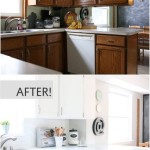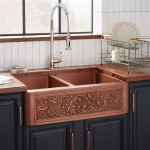Creating A Stainless Steel Outdoor Kitchen Sink
An outdoor kitchen enhances outdoor living spaces, providing a functional area for food preparation, cooking, and entertainment. A key component of any well-designed outdoor kitchen is a sink, offering convenient access to water for washing produce, cleaning utensils, and general hygiene. Stainless steel is a popular choice for outdoor kitchen sinks due to its durability, resistance to corrosion, and ease of maintenance. This article provides a comprehensive guide to creating a stainless steel outdoor kitchen sink, covering essential considerations, design options, installation processes, and maintenance tips.
The first step in creating a stainless steel outdoor kitchen sink is meticulous planning. This involves considering several factors, including the desired location, size and configuration of the sink, plumbing requirements, and the overall design aesthetic of the outdoor kitchen. Proper planning ensures a functional and aesthetically pleasing outcome.
Key Considerations for Planning an Outdoor Kitchen Sink
The selection of a suitable location significantly impacts the convenience and functionality of the outdoor kitchen sink. It is crucial to choose a spot that is easily accessible from the cooking area and other workstations. Proximity to existing plumbing lines is a major factor to consider, as it will minimize the cost and complexity of the installation. The location should also provide adequate drainage to prevent water accumulation and potential damage to the surrounding landscape. Consider prevailing winds and sun exposure to optimize user comfort while using the sink.
The dimensions of the sink determine its capacity and suitability for various tasks. A larger sink is preferable for washing large pots and pans, while a smaller sink may suffice for basic tasks such as rinsing vegetables and washing hands. The depth of the sink bowl is another important factor to consider. A deeper bowl prevents splashing and provides more space for accommodating larger items. The overall size and configuration of the sink must be proportional to the size of the outdoor kitchen and the intended usage patterns.
Adequate drainage is essential for preventing water buildup and ensuring the longevity of the sink and surrounding structure. If connecting to an existing drainage system, ensure proper slope and connection to avoid blockages or backflow. If an existing system is not available, consider installing a separate drainage system, such as a dry well or a French drain. The drainage system must comply with local building codes and regulations.
The design of the stainless steel sink must complement the overall aesthetic of the outdoor kitchen. Stainless steel offers a sleek and modern appearance that blends well with various design styles. Consider the finish of the stainless steel, such as brushed or polished, to match the other appliances and fixtures in the outdoor kitchen. The style of the faucet and other accessories should also align with the overall design theme.
Once the planning phase is complete, the next step involves selecting the appropriate materials and components for the sink installation. This includes choosing the right type of stainless steel sink, faucet, plumbing fittings, and any necessary structural supports.
Stainless steel is graded based on its composition and resistance to corrosion. Grades 304 and 316 are commonly used for outdoor kitchen sinks due to their higher chromium and nickel content, which provides excellent resistance to rust and corrosion. Grade 316 stainless steel offers superior protection against chloride corrosion, making it ideal for coastal environments or areas with high salt content in the air.
Outdoor faucets are designed to withstand the elements and provide reliable performance in outdoor environments. Choose a faucet that is constructed from durable materials such as stainless steel or brass with a weather-resistant finish. Options include single-lever faucets, pull-out sprayers, and pot fillers. The faucet should have a suitable flow rate and pressure for the intended usage.
Plumbing fittings and pipes must be compatible with the existing plumbing system and suitable for outdoor use. Use copper, PVC, or PEX pipes for water supply lines. Ensure that all fittings are properly sealed and insulated to prevent leaks and freezing in cold climates. The drainpipe should be made of durable material such as PVC or ABS and should be properly sloped to ensure efficient drainage.
Depending on the design of the outdoor kitchen, structural supports may be necessary to hold the weight of the sink and faucet. This can include constructing a framework using wood, metal, or concrete. Ensure that the supports are level and sturdy to prevent the sink from shifting or collapsing over time.
With the planning and material selection complete, the installation process can begin. This involves preparing the site, installing the sink, connecting the plumbing, and testing the system for leaks. Seek the assistance of a qualified plumber or contractor if unfamiliar with plumbing procedures or if required by local codes.
Steps for Installing a Stainless Steel Outdoor Kitchen Sink
Prepare the site by clearing any debris and ensuring that the surface is level and stable. If constructing a new countertop or enclosure for the sink, follow the design plans and use appropriate materials. Ensure that the countertop or enclosure is adequately supported and can withstand the weight of the sink and any items placed in it.
Carefully position the stainless steel sink in the prepared opening and ensure that it fits snugly and securely. If necessary, use shims to level the sink. Apply a bead of sealant around the edge of the sink to prevent water from seeping underneath. Some sinks come with mounting clips or brackets that should be used to secure the sink to the countertop or enclosure.
Connect the faucet to the water supply lines using appropriate fittings and connectors. Ensure that the connections are tight and leak-free. Install shut-off valves on the water supply lines to allow for easy maintenance and repairs. Connect the drainpipe to the drain fitting on the sink and ensure that it is properly sloped to allow for efficient drainage. Use Teflon tape or pipe dope to seal the threads and prevent leaks.
Once the sink and plumbing are installed, thoroughly test the system for leaks. Turn on the water supply and check all connections for drips or signs of leakage. Tighten any loose fittings and retest the system. Ensure that the drain is functioning properly and that water is flowing freely without any blockages. Check for any signs of water accumulation around the sink and drainage area.
Stainless steel requires regular maintenance to preserve its appearance and prevent corrosion. Proper cleaning and care ensure the longevity of the outdoor kitchen sink and maintain its aesthetic appeal.
Maintenance and Care of Stainless Steel Sinks
Regular cleaning is essential to remove dirt, grime, and food particles. Use a mild soap and water solution to clean the sink after each use. Avoid using abrasive cleaners, scouring pads, or steel wool, as they can scratch the surface of the stainless steel. Rinse the sink thoroughly with clean water and dry it with a soft cloth to prevent water spots.
Hard water stains can accumulate on stainless steel sinks over time. To remove hard water stains, use a solution of vinegar and water. Apply the solution to the stained areas, let it sit for a few minutes, and then scrub gently with a soft cloth or sponge. Rinse the sink thoroughly with clean water and dry it with a soft cloth.
To prevent rust and corrosion, apply a stainless steel cleaner and polish periodically. These products create a protective barrier that helps to repel water and prevent oxidation. Follow the manufacturer's instructions for application and buff the sink with a clean cloth to restore its shine. Avoid using chlorine bleach or other harsh chemicals, as they can damage the stainless steel.
In freezing temperatures, it is essential to winterize the outdoor kitchen sink to prevent damage from frozen pipes. Turn off the water supply to the sink and drain all the water from the pipes. Insulate the pipes and faucet with pipe insulation or heat tape to protect them from freezing. Consider covering the sink with a waterproof cover to protect it from the elements.
Creating a stainless steel outdoor kitchen sink involves careful planning, material selection, installation, and maintenance. By following the guidelines outlined in this article, it is possible to construct a functional and aesthetically pleasing outdoor kitchen sink that enhances the outdoor living experience. A well-designed and maintained stainless steel sink will provide years of reliable service and add value to the outdoor kitchen.

Outdoor Kitchen Sink Woodworking Metalworking Sewing How To I Like Make Stuff

Amazing Diy Outdoor Kitchen With Grill And Sink

33 Inch Black Stainless Steel Modular Sink Cabinet Can Be Combined To Create Your Outdoor Kitchen

33 Inch Stainless Steel Outdoor Sink Cabinet Modular Build Your Own Suout Kitchen

Creating The Ultimate Outdoor Kitchen Topiarius

How To Build An Outdoor Kitchen Start Finish

Outdoor Sink Build

30 Outdoor Kitchen Ideas For Your Backyard Setup

Is It Worth To Build An Outdoor Kitchen Fesfoc
:strip_icc()/101254540-1ca2fd0502e04d00aed8e88166f05f34.jpg?strip=all)
Diy Outdoor Kitchen Plumbing
Related Posts








